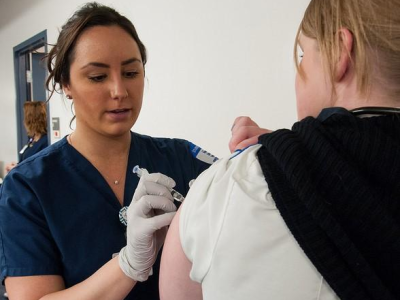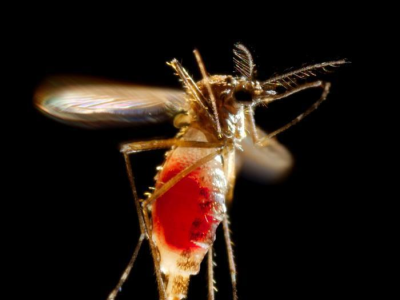The estimated effectiveness of at least one dose of the influenza vaccine against emergency department (ED) visits or hospitalization was over 50% across disease severity levels among nearly 16,000 US children during five respiratory illness seasons, finds a study published late last week in JAMA Network Open.
The New Vaccine Surveillance Network Collaborators conducted a case-control study with a test-negative design with 15,728 children aged 6 months to 17 years who visited an ED or were hospitalized at one of eight US medical centers for acute respiratory illness from November 2015 to April 2020.
The team grouped patients' demographic and clinical characteristics by flu vaccination status.Of all children, 55.4% were boys, 85.5% were aged 6 months to 8 years, 14.5% were 9 to 17 years, 32.9% were Black, 26.6% were Hispanic, and 31.2% were White.
"Annual influenza vaccination is recommended in the US for all persons 6 months or older and can reduce the risk of developing severe illness due to influenza virus infection," the study authors wrote. "However, influenza vaccine coverage in children is lower than the Healthy People 2030 Goal of 70% and has declined in recent years (from 64% in the 2019-2020 season to 48% in the 2023-2024 season as of February 2024)."
Higher VE among younger children
In total, 17.2% of participants tested positive for flu, and 82.8% tested negative and served as controls. Of flu patients, 61.8% visited an ED, 33.1% were hospitalized for noncritical disease, and 5.1% were hospitalized for critical illness, including 138 children admitted to an intensive care unit (ICU), 1 who required extracorporeal membrane oxygenation (ECMO), 35 who were intubated, and 2 who died.
About half (49.5%) of all participants were vaccinated against flu, and most of them (87.3%) were 6 months to 8 years old. Estimated vaccine effectiveness (VE) of one or more doses of flu vaccine was 55.7% (95% confidence interval [CI], 51.6% to 59.6%) for preventing flu-related ED visits or hospitalizations among children of all ages.
VE was similar across disease severity levels: 52.8% (95% CI, 46.6% to 58.3%) for ED visits, 52.3% (95% CI, 44.8% to 58.8%) for noncritical hospitalization, and 50.4% (95% CI, 29.7% to 65.3%) for critical hospitalization.
Estimated VE was 45.8% (95% CI, 37.6% to 52.9%) against influenza A(H3N2), 64.9% (95% CI, 59.0% to 70.1%) against influenza A(H1N1)pdm09, and 56.4% (95% CI, 49.6% to 62.4%) against influenza B. VE was higher for children aged 6 months to 8 years (58.1%; 95% CI, 53.7% to 62.1%) than for children 9 to 17 years (42.6%; 95% CI, 29.2% to 53.5%).
Only half given antiviral drugs at admission
Unvaccinated flu patients spent more days in the hospital and ICU than their vaccinated peers. Among children who visited an ED for flu, 27.5% had at least one underlying medical condition. Of hospitalized flu patients, 60.1% had at least one chronic condition, and just 50.2% were given flu antiviral drugs at admission.
Improving an understanding of VE against severe influenza in children could increase uptake of influenza vaccination and improve vaccine policies globally.
"The CDC [Centers for Disease Control and Prevention] recommends antiviral treatment as soon as possible for any patient with suspected or confirmed influenza who is hospitalized; has severe, complicated, or progressive illness; or is at higher risk for influenza complications," the authors wrote.
Among children who visited an ED or were hospitalized for flu, 39.9% had at least one underlying condition. Respiratory conditions were most common among flu patients (24.7%), followed by neurologic or neuromuscular disease (7.5%) and gastrointestinal or liver disease (6.1%).
"Improving vaccine uptake in children may reduce influenza illness and, subsequently, ED and hospital visits in a time of increased respiratory virus co-circulation," the researchers wrote. "More research is needed to understand how influenza vaccines protect children against a gradient of severe outcomes and whether this varies by influenza type or subtype and season."
The team noted that uptake of other childhood vaccines such as those against pertussis (whooping cough) rose after published studies estimated high VE against severe illness. "Thus, improving an understanding of VE against severe influenza in children could increase uptake of influenza vaccination and improve vaccine policies globally," they wrote.



















